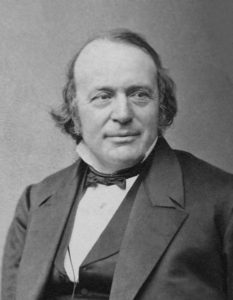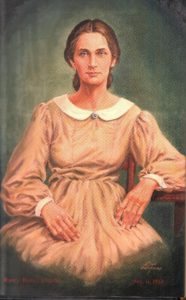 If you follow my Facebook page (which you can do here if you don’t already), you may have already heard about my big news. For those who don’t (and why don’t you?), here is both the news and some additional info. Ready? BIG NEWS! I’m happy to announce that I have signed a contract with Rowman & Littlefield to publish my next Abraham Lincoln book.
If you follow my Facebook page (which you can do here if you don’t already), you may have already heard about my big news. For those who don’t (and why don’t you?), here is both the news and some additional info. Ready? BIG NEWS! I’m happy to announce that I have signed a contract with Rowman & Littlefield to publish my next Abraham Lincoln book.
There’s a long story behind the creation of this book, and no, I won’t bore you with it. Suffice to say I’ve been researching this topic for quite some time and that it blends my two career backgrounds – Science and Abraham Lincoln. I’ll have more updates, a title reveal, cover reveal, related content, and announcement of a special guest Foreword writer as the work progresses, but here’s some info to whet your appetite.
Rowman & Littlefield is a large, high-end independent publisher founded in 1949. Since that time it has acquired dozens of imprints and publishes everything from scholarly books for the academic market and trade books for the general market. My book is a trade book, written for a widely informed reader. Rowman, or sometimes just R&L, is based in nearby Maryland and has its own book distribution company to get books into Barnes and Noble and independent stores as well as Amazon and other online sales outlets. The plan is to produce hardcover, audio, and electronic (e.g., Kindle) books immediately, with a softcover book to follow in a year or two depending on sales.
Unlike the graphics heavy design of my three previous published books, the new Abraham Lincoln book will be more traditional in design. That means mostly text with a photo spray in the middle (or possibly interspersed throughout; final design is pending). The final word count will be between 80,000 and 90,000 words.
Oh, and there will be a special guest foreword by someone most people in both the political and Lincoln worlds will recognize. More on that in future updates.
My deadline for providing the manuscript is June 1st of this year, with a planned publication date in time for Lincoln’s birthday next year.
I’ll have more updates as time goes on, including the final title, cover, release date, and how to pre-order. And yes, before that I’ll let you know more about the topic and give a preview. You’ll get some hint by clicking around the articles I’ve posted on this website.
Back to writing!
David J. Kent is an avid science traveler and the author of Lincoln: The Man Who Saved America. His previous books include Tesla: The Wizard of Electricity and Edison: The Inventor of the Modern World and two specialty e-books: Nikola Tesla: Renewable Energy Ahead of Its Time and Abraham Lincoln and Nikola Tesla: Connected by Fate.
Follow me for updates on my Facebook author page and Goodreads.



 Louis Agassiz arrived at the White House on January 15, 1865 with Massachusetts Congressman Samuel Hooper. The famous scientist would have his one and only meeting with Abraham Lincoln. While the two influential men had never met before, Hooper was well-known to Lincoln. It was Hooper’s home in Washington DC that George McClellan had used as headquarters when he commanded the Union army. Hooper was also briefly the father-in-law of Charles Sumner, who had married Hooper’s daughter but divorced after only a short marriage. Today, however, the focus was on Agassiz.
Louis Agassiz arrived at the White House on January 15, 1865 with Massachusetts Congressman Samuel Hooper. The famous scientist would have his one and only meeting with Abraham Lincoln. While the two influential men had never met before, Hooper was well-known to Lincoln. It was Hooper’s home in Washington DC that George McClellan had used as headquarters when he commanded the Union army. Hooper was also briefly the father-in-law of Charles Sumner, who had married Hooper’s daughter but divorced after only a short marriage. Today, however, the focus was on Agassiz. Heck of a year, wasn’t it? I’m sure I’m not alone in admitting that the year in a writer’s life didn’t go exactly as planned. And yet, looking back on
Heck of a year, wasn’t it? I’m sure I’m not alone in admitting that the year in a writer’s life didn’t go exactly as planned. And yet, looking back on  Nancy Hanks Lincoln died October 5, 1818 of “the milk sick.” Or did she? While Abraham Lincoln biographers generally attribute her death to milk sickness, a possibility exists that it might have actually been something else. The story goes like this:
Nancy Hanks Lincoln died October 5, 1818 of “the milk sick.” Or did she? While Abraham Lincoln biographers generally attribute her death to milk sickness, a possibility exists that it might have actually been something else. The story goes like this: On June 30, 1862, the Senate confirmed Isaac Newton as Abraham Lincoln’s first Commissioner of the Department of Agriculture, which Lincoln had signed into existence a month earlier. Having come to despise the hard labor of his early years on subsistence farms, Lincoln had always favored government intervention to help people better their condition and looked for ways to bring science to agriculture.
On June 30, 1862, the Senate confirmed Isaac Newton as Abraham Lincoln’s first Commissioner of the Department of Agriculture, which Lincoln had signed into existence a month earlier. Having come to despise the hard labor of his early years on subsistence farms, Lincoln had always favored government intervention to help people better their condition and looked for ways to bring science to agriculture.






